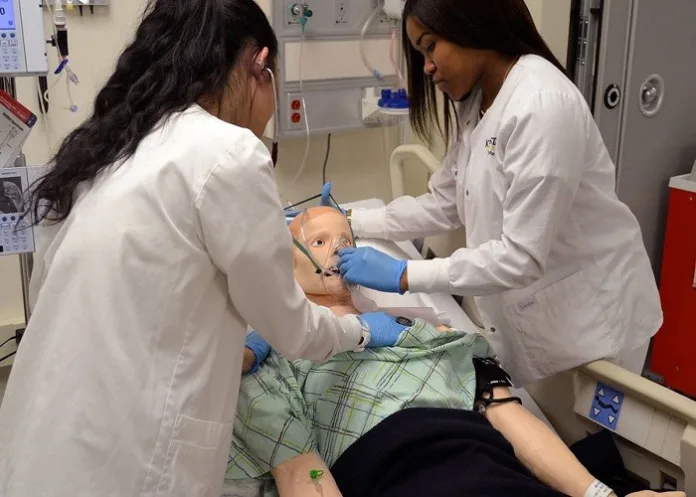A hands-on learning experience in a simulated hospital at the University of the Free State has been training students for 10 years, allowing them to do procedures they would not yet be allowed to do in a hospital, and enabling them to learn from their mistakes.
The unit, in the School of Biomedical Sciences, creates a safe environment to train medical professionals, said clinical simulation and skills unit head Professor Mathys Labuschagne. “We let them make mistakes and learn from these – to do procedures they would not be allowed to do in a hospital, like handling an anaesthetic emergency, yet which we expect them to do when they graduate.”
The university was one of the first medical schools to set up a dedicated clinical simulation and skills unit, unattached to any department, and celebrates its 10th anniversary this year, reports TimesLIVE, having trained about 2 000 medical students and other health professionals over the past decade.
The UFS has two more simulation units, one for the school of nursing and one for the school for health and rehabilitation sciences.
The more realistic the conditions in the simulated hospital, whose equipment includes monitors, ventilators and an ultrasound machine, the better the learning experience, said the staff.
SimMan 3G Advanced is one of the more sophisticated human-patient simulators, said Dr Riaan van Wyk, head of technical and IT support for the unit, which also has two medical officers, an emergency care practitioner and a registered nurse on the staff.
SimMan can sweat, bleed, have a heart attack, be resuscitated with defibrillators and react to injected substances.
Another is Victoria and her baby – advanced models which can mimic the functions of real life, such as birthing complications, convulsing, bleeding and shock, and with the infant model being able to cry and become cyanotic.
“Simulation is not just the manikins. We also use actors as ‘simulated patients’, for example, if the student needs to tell a patient they have cancer,” Van Wyk said.
“For our last assessment, we had two students from the drama department who were taught to portray psychosis and depression. They were so good not even a psychiatrist would have known they were actors.”
A ward, labour ward and intensive care unit are at the heart of the “hospital”, along with observation and debriefing rooms.
“With simulation, you can fast forward or slow down a scenario,” said Labuschagne, for example, condensing a three-hour operation into 15 minutes.
A course for doing endoscopic procedures, such as gastroscopes and colonoscopies, was recently offered at the unit on a virtual reality simulator. In two hours, the group had done the equivalent of 30 patient biopsies.
Health professionals from across SA, and other African countries, come to the unit for short courses, for example, in paediatric anaesthetics and simulation education (to train the trainers).
In a talk on the future of clinical simulation, Labuschagne calls for training to extend beyond curricula “to an emphasis on knowledge management and communication”.
“How would you like to be on a plane and the pilot welcomes you, saying it is the first time he is flying the plane. This is what we expect from doctors, to do a procedure which has never been done before,” he said. “We offer a safe in-between step between theory and practice.”
TimesLIVE article – Simulated hospital and patients make medicine safer (Restricted access)
See more from MedicalBrief archives:
UFS staff to serve in WHO initiatives
UFS Nuclear Medicine Department successfully treats advanced prostate cancer
UFS: R58m grant for establishment of advanced pharmacology R&D laboratory

